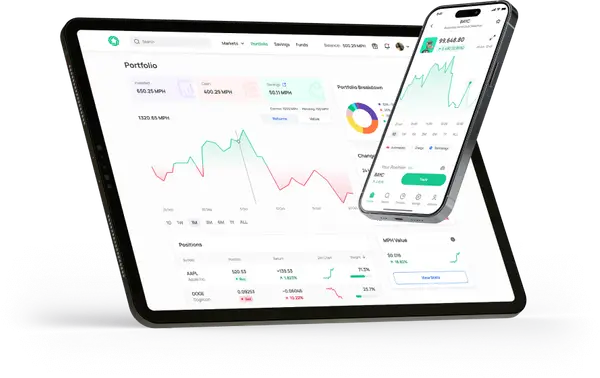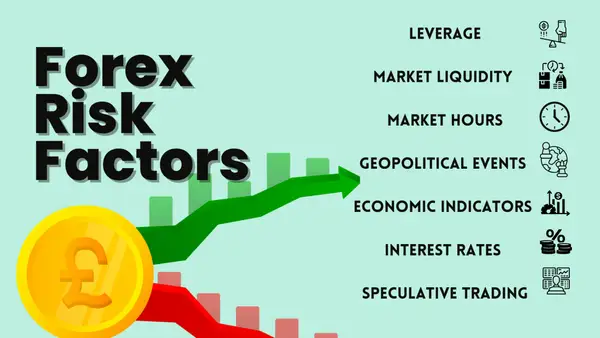What Is Hedging in Forex? A Trader’s Essential Guide

The foreign exchange market, or forex, is often considered the “black sheep” of the financial markets. With a daily trading volume exceeding $6.6 trillion according to the latest data, Forex remains a magnet for millions of traders worldwide, working non-stop 24 hours a day, 5 days a week. However, the lure of quick profits draws many into the fray, only for them to discover, often after significant losses, that day trading the forex market requires an extraordinary level of dedication, time and skill. Shockingly, statistics reveal the bitter truth: around 96% of retail traders eventually find themselves on the losing side.
Indeed, forex trading can pose risks that exceed the resources of the average retail trader. Unless you belong to the elite league of established institutions, the major players in the forex market, with enough capital to compensate for potential losses, navigating this terrain can be dangerous.
Despite its vast scope and liquidity, actively participating in the forex market entails navigating a minefield of risk. This reality underscores the paramount importance of adopting a sound risk management strategy such as hedging for every trader entering this forex space.
As a fellow forex trader, I've learned firsthand the importance of hedging in the volatile world of forex trading. In this guide, I'll break down the basics of hedging, explore different strategies, show you how to apply hedging in your forex trades, and shed light on the crucial role brokers play in the process. By the end of this article, you'll have a clear understanding of hedging and how it can help you manage risk and improve your trading performance.
Understanding Hedging in Forex
Hedging is a fundamental concept in the world of finance, particularly in high risk environments. When it comes to forex trading, hedging is a risk management technique that can provide traders with a sense of security. It allows them to navigate the ever-changing nature of the market with more confidence, knowing that they have measures in place to mitigate potential losses.
What is Hedging in Forex?
Simply put, hedging in forex refers to the act of opening additional positions to offset the potential losses of an existing position. It involves taking opposite positions in correlated currency pairs or using derivative instruments such as options and futures contracts. By hedging, traders aim to protect themselves from unexpected market movements and reduce the impact of potential losses. This ensures a more stable trading experience, particularly in times of high market volatility.
Let's take the example of the USD, the most popular of the approximately 180 currencies traded in the forex world and at least one side of 88% of all currency transactions. As a day trader in the forex market, you've opened a long position in EUR/USD, expecting the euro to rise. To protect against potential losses, you simultaneously open a short position in GBP/USD, a correlated currency pair. If the euro strengthens as anticipated, your EUR/USD trade profits, while the GBP/USD hedge may incur losses. Conversely, if the euro weakens unexpectedly, the gains from the GBP/USD hedge help offset losses in the EUR/USD trade, ensuring a balanced risk approach to your day trading strategy.
Would you like to try this example for yourself? Experience the thrill of trading the 16 most popular USD currency pairs, including EUR/USD, and unlock your trading potential with Morpher.com! Whether you are an experienced trader or just starting out, Morpher offers a user-friendly platform and commission-free trading to help you succeed. Plus, sign up now to receive an exclusive sign-up bonus to start your trading journey.

Why Do We Need a Hedging Strategy?
In the dynamic world of forex trading, volatility is the name of the game. Prices fluctuate constantly, influenced by a myriad of economic, political and social factors. This constant flux creates a landscape fraught with uncertainty, exposing traders to significant risks.
Hedging strategies come into play as a shield against market turbulence. By practicing hedging techniques, investors can insulate themselves from the negative effects of sudden price movements. Hedging acts as a buffer, allowing traders to minimize their potential losses and maintain a more stable level of profitability amidst the unpredictable ups and downs of the market. It acts as a safety net, instilling confidence and resilience in traders as they navigate the choppy waters of the forex market.
Moreover, hedging is not just about weathering the storm; it is also about securing long-term investment goals. For traders with broad horizons, hedging positions becomes crucial. By hedging their investments, investors protect themselves against the short-term volatility of the market, ensuring that their portfolios remain flexible and well positioned for continued growth.

Pros and Cons of Hedging
Hedging, like any wealth-building strategy, offers varying advantages and disadvantages depending on trading style, investment preferences and market conditions. While hedging may offer significant benefits for some investors, it may not be suitable for others.
Advantages of Hedging:
-
Short-term Risk Minimization: Hedging using futures and options serves as an effective short-term risk-minimizing strategy for long-term traders and investors.
-
Profit Locking: Hedging tools can also be utilized to lock in profits, providing traders with a level of security against potential losses.
-
Survival During Market Downturns: Hedging enables traders to survive hard market periods by protecting their investments from significant losses.
-
Protection Against Market Changes: Successful hedging provides traders with protection against commodity price changes, inflation, currency exchange rate fluctuations, interest rate changes, and other market variables.
-
Time Saving: Hedging can save time as long-term traders are not required to constantly monitor or adjust their portfolios in response to daily market volatility.
-
Opportunity for Complex Strategies: Hedging using options allows traders to practice complex options trading strategies to maximize their returns.
Disadvantages of Hedging:
-
Cost Involvement: Hedging involves costs that can eat into potential profits, reducing the overall profitability of trades.
-
Trade-off Between Risk and Reward: Risk and reward are often proportional to one another; thus, reducing risk through hedging typically means reducing potential profits.
-
Challenges for Short-term Traders: For most short-term traders, such as day traders, hedging can be a challenging strategy to implement effectively due to its complexity and time requirements.
-
Limited Benefits in Favorable Market Conditions: If the market is performing well or moving sideways, hedging may offer little to no benefits, potentially resulting in missed profit opportunities.
-
Higher Account Requirements: Trading options or futures often demands higher account requirements, such as more capital or a higher account balance, which may limit accessibility for some traders.
-
Need for Skill and Experience: Hedging is a precise trading strategy, and successful implementation requires good trading skills and experience, making it less suitable for novice traders.
In summary, while hedging can offer significant advantages in managing risk and protecting investments, traders must carefully consider the associated costs and complexities to determine whether it aligns with their trading goals and preferences.
Types of Forex Hedging Strategies
Forex trading demands a strategic approach to mitigate risks and maximize potential gains. Among the various techniques available, hedging stands out as a versatile tool for traders to navigate the dynamic and often volatile forex market. Let's delve deeper into some prominent hedging strategies:
Simple Hedging Techniques
Simple forex hedging involves the simultaneous opening of two opposing positions to counterbalance potential losses. This straightforward strategy acts as a protective shield, enabling traders to safeguard their investments against market fluctuations while retaining exposure to potential gains.
For instance, imagine a trader opens a long position on a particular currency pair, anticipating a rise in value. To hedge against potential losses, they simultaneously open a short position on the same pair. Thus, if the market moves unfavorably against their long position, the losses can be offset by profits from the short position.
Options Hedging
Forex options hedging offers traders flexibility and protection against adverse price movements. By purchasing or selling currency pairs at predetermined prices within specified timeframes, traders can limit potential losses and secure profits.
Consider a scenario where a trader anticipates a currency pair's depreciation. To hedge against this risk, they can purchase a put option, granting them the right to sell the pair at a predetermined price within a specified timeframe. If the market moves as anticipated, the trader can exercise the option, selling the pair at a higher price and securing a profit.
Multiple Currency Hedging
In this strategy, traders diversify their hedging positions across multiple positively correlated currency pairs. By spreading their investments across different pairs, traders can mitigate risks associated with individual currency pairs and reduce overall vulnerability to market volatility.
For example, if a trader believes the US dollar (USD) will weaken, they may open long positions on currency pairs such as EUR/USD and GBP/USD. In the event of USD depreciation, potential losses on the EUR/USD trade can be offset by gains on the GBP/USD trade.
Overall, effective risk management is paramount in forex trading. Hedging strategies offer traders a toolkit to mitigate risks and protect their investments. Whether through simple hedging, options, or multiple currency hedging, traders can navigate the volatile forex market with confidence and enhance their trading performance.
How to Implement Hedging in Forex Trading
Identifying the Right Time to Hedge
Timing is crucial when it comes to implementing hedging strategies. Traders must carefully analyze market conditions and assess potential risks before deciding to hedge. The key is to strike a balance between proactive risk management and avoiding unnecessary hedging, as excessive hedging can limit potential gains.
Choosing the Appropriate Hedging Strategy
The appropriate hedging strategy depends on various factors, including the trader's risk tolerance, market conditions, and trading objectives. It is crucial to select a strategy that aligns with your trading style and goals to effectively manage risk and optimize your trading outcomes.
Monitoring and Adjusting Your Hedge
After implementing a hedge, it is crucial to continuously monitor its effectiveness and make necessary adjustments as market conditions change. Maintaining an active approach and staying informed can help traders optimize their hedges and respond to potential risks in a timely manner.
The Role of Brokers in Forex Hedging
Brokers serve as indispensable allies for traders looking to implement effective hedging strategies in the forex market. They play a pivotal role in facilitating hedging maneuvers by providing access to a wide range of hedging tools and instruments, such as options and futures contracts. Additionally, brokers offer valuable market insights, analysis, and research reports to assist traders in making informed hedging decisions.
How Brokers Can Facilitate Hedging
Brokers streamline the hedging process by ensuring efficient execution of trades, enabling traders to enter and exit positions promptly. Moreover, they offer personalized support and guidance, helping traders tailor their hedging strategies to suit their risk tolerance and investment objectives. By partnering with a reputable broker, traders can navigate the complexities of forex hedging with confidence and maximize their trading potential.
Choosing a Broker for Hedging
When selecting a broker for hedging purposes, traders should consider factors such as regulatory compliance, execution speed, reliability, and customer support. A reputable broker with a proven track record in the industry can provide traders with the necessary tools and resources to implement successful hedging strategies. By conducting thorough research and due diligence, traders can find a broker that meets their specific hedging needs and empowers them to achieve their trading goals.
FAQ
What is hedging in forex?
Hedging in forex is a risk management technique used by traders to protect their positions and portfolios from adverse market movements.
Why is hedging important in forex trading?
Hedging is important in forex trading as it helps minimize potential losses and stabilize trading outcomes, particularly during times of high market volatility.
What are some common hedging strategies in forex?
Common hedging strategies in forex include simple forex hedging, multiple currency pairs hedging, and forex options hedging.
When should I hedge in forex?
Deciding when to hedge in forex depends on market conditions and your risk assessment. It is important to strike a balance between proactive risk management and avoiding unnecessary hedging.
What should I consider when choosing a broker for hedging?
When choosing a broker for hedging, consider factors such as regulatory compliance, reputation, customer support, and available trading platforms. A reliable broker is essential for the successful implementation of your hedging strategies.
Ready to take your forex hedging strategies to the next level? Discover the innovative world of Morpher, where you can trade forex and a multitude of other assets with zero fees and infinite liquidity. Embrace the power of blockchain technology and experience a new era of investing with fractional shares, short selling without interest fees, and up to 10x leverage. Sign up for Morpher today, take control of your investments with our secure Morpher Wallet, and enjoy a unique trading experience with Virtual Futures. Sign Up and Get Your Free Sign Up Bonus to start trading on a platform that's as dynamic and forward-thinking as your trading strategy.

Disclaimer: All investments involve risk, and the past performance of a security, industry, sector, market, financial product, trading strategy, or individual’s trading does not guarantee future results or returns. Investors are fully responsible for any investment decisions they make. Such decisions should be based solely on an evaluation of their financial circumstances, investment objectives, risk tolerance, and liquidity needs. This post does not constitute investment advice.

Painless trading for everyone
Hundreds of markets all in one place - Apple, Bitcoin, Gold, Watches, NFTs, Sneakers and so much more.

Painless trading for everyone
Hundreds of markets all in one place - Apple, Bitcoin, Gold, Watches, NFTs, Sneakers and so much more.









